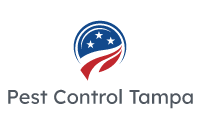Welcome to Pest Control Tampa! In this blog, we explore all things related to pest control in the Tampa area. In our latest article, «What animal eats the most termites?» we dive into the fascinating world of natural termite predators. Learn about these voracious creatures that can help keep your home termite-free.
The Top Predator: Which Animal Devours the Most Termites in Pest Control Tampa?
The Top Predator: Which Animal Devours the Most Termites in Pest Control Tampa?
When it comes to termite control in Tampa, there is one creature that stands out as the top predator – the armadillo. These armored mammals have a voracious appetite for termites and can consume large quantities of them in a single night.
Armadillos are well-suited for termite hunting, with their strong claws and keen sense of smell. They use their claws to dig through the ground and locate termite colonies, which they then feast upon. Their long, sticky tongues are perfect for capturing and consuming the tiny termites.
Not only do armadillos help control termite populations, but they also provide other benefits to the ecosystem. They aerate the soil as they dig, promoting better drainage and nutrient circulation. Additionally, armadillos eat other pests such as ants, beetles, and grubs, further contributing to pest control efforts.
While armadillos are effective in controlling termites, it’s important to note that they may also cause damage to your yard or garden. Their digging habits can uproot plants and create unsightly mounds of dirt. If you’re facing both a termite problem and armadillo damage, it may be necessary to seek professional assistance from a reputable pest control company in Tampa.
In conclusion, the armadillo is the top predator in Pest Control Tampa when it comes to devouring termites. Their natural hunting abilities and appetite for termites make them an invaluable ally in controlling these destructive pests. However, it’s essential to find a balance between termite control and managing any potential damage caused by armadillos.
Frequent questions
What predator is most effective at controlling termite populations in Tampa?
The most effective predator for controlling termite populations in Tampa is Nasutitermes corniger, also known as the conehead termite. This particular species is a highly aggressive and voracious predator of termites. Its large size and strong jaws enable it to easily consume other termites, including subterranean termites which are commonly found in Tampa. The conehead termite is usually introduced to an area where termite infestations are a problem, and it quickly establishes itself as the dominant predator, reducing termite populations significantly. Additionally, the conehead termite is resistant to many of the control measures used against termites, making it an optimal choice for long-term termite management in Tampa.
Are there any native animals in Tampa that naturally feed on termites?
Yes, there are native animals in Tampa that naturally feed on termites. Some of these include armadillos, raccoons, and anteaters. Armadillos are particularly known for their fondness for termites and can consume large numbers of them in a single sitting. Raccoons also have a varied diet that includes termites, among other insects. Anteaters, while less commonly found in Tampa, are specialized in feeding on ants and termites. These natural predators can help control termite populations in the area. However, it is important to note that relying solely on these animals for termite control may not be sufficient, and professional pest control services should be sought for effective and comprehensive treatment.
How do certain animal species in Tampa contribute to the control of termite infestations?
Certain animal species in Tampa can contribute to the control of termite infestations in several ways. One example is the presence of predatory ants such as carpenter ants. These ants feed on termites and can help to keep their populations in check. Additionally, birds like woodpeckers can also play a role in controlling termites. Woodpeckers are known to eat termites and can help reduce their numbers.
Another important contributor to termite control is the presence of nematodes. Nematodes are microscopic worms that infect and feed on termites. They can be introduced into termite-infested areas as a natural form of pest control. The nematodes carry bacteria that are toxic to termites and can help to significantly reduce their populations.
It is worth noting that while these animal species can contribute to termite control, they should not be relied upon as the sole method of eradication. Professional pest control services are often required to effectively eliminate termite infestations and prevent further damage to structures.
In conclusion, while there are several animals that consume termites, the anteater stands out as the creature that eats the most termites. With its long sticky tongue and specialized snout, the anteater is uniquely equipped to hunt and devour termites at an astonishing rate. This valuable information is particularly relevant in the context of Pest Control Tampa, as homeowners and business owners can better understand the natural predators of termites and potentially incorporate strategies to attract these animals to help control termite populations. By having a better understanding of the food chain and natural behaviors, we can work towards more sustainable and effective pest control methods in Tampa and beyond.
